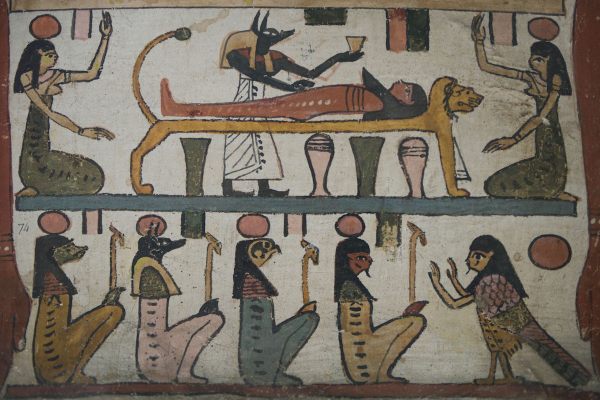Jeremy Bentham’s Head Is Coming Out of Its Box and Under the Microscope
Scientists want to know if the forward-thinking philosopher had autism.

Philosopher Jeremy Bentham is awful quirky for a man sometimes known as the father of modern utilitarianism. He had a pet bear, an adored black cat (named the Reverend Doctor Lankhim), and a penchant for showing dinner party guests the two glass eyes he kept in his pocket. The eyeballs were part of a larger project: Bentham wanted his body publicly dissected; his skeleton cleaned up, fully articulated, and padded with straw; and his head mummified for display.
He would be, he said in his will, “the Auto-Icon,” visited by friends or occasionally wheeled out for gatherings and parties. But after his death in 1832, the preserving process went a bit … awry. Bentham had asked a friend, Thomas Southwood Smith, to embalm his head using traditional New Zealand Maori methods. The process—he was essentially smoked, and fitted with the eyes from his pocket—didn’t work as hoped. The result is not quite party-appropriate. Today the darkened, leathery, expressionless head is usually kept locked away, though Bentham’s body—topped with a wax head—remains propped up in a wooden box with a glass front at University College London.
But now, as part of a wider university project, the head has been brought back out for display. This exhibition, called What Does It Mean To Be Human?, puts Bentham’s head on show alongside that of Egyptologist Flinders Petrie. “What does the scientific interrogation of our dead bodies tell us about how we think about ourselves?” the exhibition posits. This is the first time in decades that Bentham’s head has been removed from its special wooden box in this way. (Apparently, according to Buzzfeed, it smells something like “vinegar and feet and bad jerky and damp dust.”)
No one’s entirely sure why Bentham wanted to be preserved in this way, though it’s possible that he, likely an atheist, didn’t want to give large amounts of money to the church for his burial, and both cremation and secular burial were basically unheard of at the time. Others have suggested that he might have intended it as a joke of sorts, or been attempting to encourage more people to donate their bodies to science. An advocate for abolition, women’s rights, and the decriminalization of homosexuality, Bentham was reliably ahead of his time. “The exhibition positions Bentham’s head within the context of his scholarship and his beliefs, with reference to prevailing ideas of the time about death and dead bodies,” said curator Subhadra Das in a statement. “It asks the question, why did he believe donation was important? And forces us to ask what that means to us today.”
But there’s another interest: Bentham’s genome. Mark Thomas and Lucy van Dorp, both of the university’s Department of Genetics, Evolution and Environment, have been attempting to extract Bentham’s DNA from his head with cutting-edge technology and assistance from London’s Natural History Museum. This, Das told The Telegraph, is like “looking at the shredded pages of a book, so much information is missing.” It’s hoped that by testing Bentham’s DNA, scientists may be able to shed light on a 2006 theory that he had autism spectrum disorder (genetic tests can reveal certain autism risk factors). This diagnosis might also explain his unusual postmortem requests, since, the forensic psychologists behind the theory write, autism spectrum disorder “renders more understandable the oddness of these utilitarian desires.”






















Follow us on Twitter to get the latest on the world's hidden wonders.
Like us on Facebook to get the latest on the world's hidden wonders.
Follow us on Twitter Like us on Facebook